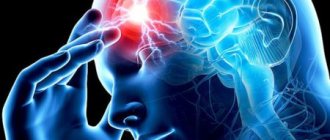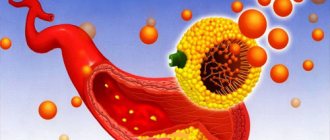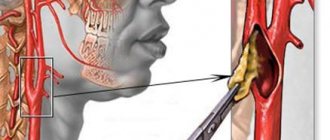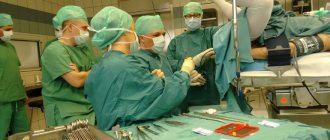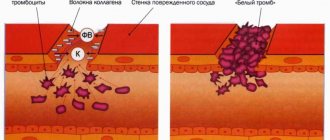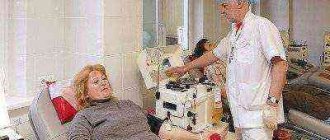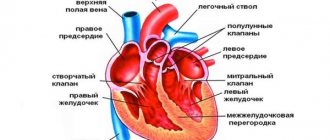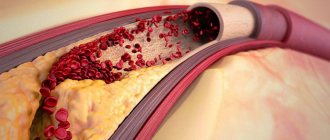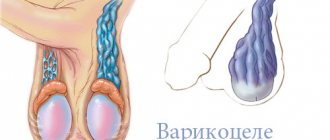Treatment under the compulsory medical insurance policy is free!
Submit your application
Follow the news, subscribe to our social networks
Details
The main cause of cerebrovascular accidents is atherosclerosis of the carotid arteries. Atherosclerotic plaques cause narrowing of the carotid arteries, which is an obstacle to normal blood circulation in the brain. Gradually, a complete blockage of the carotid artery develops, which is called occlusion. Impaired patency of the carotid artery is the main cause of ischemic stroke in the modern world. The risk of developing a stroke if the carotid artery is narrowed symptomatically by 70% or more is about 15% per year.
Many people die or become disabled from stroke every year, although modern vascular surgery can prevent it in most patients. Only regular diagnosis and trust in doctors will significantly reduce the risk of stroke. It is much easier to treat atherosclerosis of the carotid artery than ischemic stroke and its consequences.
Symptoms indicating a pathological process
At the primary stage of development, atherosclerosis does not have a clear clinical picture. Even the attending specialist, without additional diagnostics, will not be able to determine the formation of plaque in the carotid artery. Subsequently, the following symptoms may appear:
With this pathology, a person complains of constant pain in the head.
- persistent pain in the head;
- sleep disorders;
- decline in work activity;
- deviations of the speech apparatus;
- background noise in the ears;
- decreased attention.
Causes
Why do atherosclerotic plaques appear in the carotid arteries? As a rule, an atherosclerotic plaque on the carotid artery forms after damage to other vessels of the body.
The cause of the formation of atherosclerotic plaques is considered to be:
- the presence of bad habits such as smoking and alcohol;
- hypertension;
- overweight;
- sedentary lifestyle;
- unhealthy food;
- diseases associated with the endocrine system;
- being under constant stress;
Unfortunately, in the modern world too many people lead such a lifestyle, which explains the recent prevalence of this disease.
In addition, there is a part of the population in whom the risk of developing cholesterol plaques both in the carotid artery and in other vessels of the body increases. Let's list them:
- This part of the population includes older people. This is explained by the fact that with age, the elasticity of the walls of blood vessels decreases;
- people suffering from high blood pressure. Due to constant pressure on the vessels, their elasticity also decreases and they are more susceptible to various injuries;
- atherosclerosis of the carotid arteries can develop in people with diabetes mellitus, since with this disease the possibility of normal breakdown of low-density lipoproteins is lost;
- Genetic predisposition may cause cholesterol plaque to develop.
A person who belongs to the risk group and at the same time leads a lifestyle that contributes to the occurrence of this disease must be observed by the attending physician, otherwise atherosclerosis of the carotid arteries may develop.
What types of disease are there?
Cholesterol plaques in the carotid artery tend to increase. Therefore, there are several stages of the pathological process:
| Name | Description |
| Non-stenotic | Less than 50% occlusion |
| Lifestyle adjustments are sufficient for treatment | |
| Stenotic | Plaque occupies more than 60% of the artery |
| The clinical picture is actively emerging | |
| Conservative and surgical therapy | |
| Multifocal | The body undergoes major changes |
| Drug treatment does not bring results, and surgical intervention is dangerous for human life |
The main methods for identifying atherosclerosis
If any unusual symptoms occur, a person should visit a doctor and get tested.
Symptoms that are uncharacteristic for a person should alert him and force him to go to the clinic for advice. During the examination, the doctor will determine the medical history, ask about clinical manifestations and, based on primary data, prescribe additional examinations. The main ones include:
- Ultrasound of neck vessels. Allows you to check the condition of the circulatory system.
- CT. Provides a picture of the integrity of the walls of the carotid artery.
- MRI. A safe and painless procedure that shows not only large highways, but also small vascular networks.
- Angiography. The most effective and informative method of examination, however, there is a high risk of damage to the plaque, as well as the development of serious complications.
Diagnostic methods
When examining the neurological status, one can identify impaired eye movement, asymmetry of the pupils, decreased or increased tendon reflexes, trembling of arms outstretched forward, and the inability to perform tests for coordination of movements.
Instrumental and laboratory examination methods reveal:
- ophthalmoscopy – atherosclerotic retinopathy;
- Ultrasound with duplex scanning and MRI - the presence of a plaque, the degree of disruption of blood flow through the carotid artery;
- EEG – decreased functional activity of the brain;
- biochemical blood test - dyslipidemia, increased cholesterol and triglycerides, glucose (for diabetes), increased tendency to thrombus formation.
How is the treatment carried out?
After all the examinations have been carried out and the final diagnosis has been made, the doctor selects a therapeutic course. The first stage is to adjust your lifestyle. It includes giving up harmful habits, dieting and improving physical condition. After this, medications are selected that improve the vascular system and also help the plaques to resolve. Treatment with folk remedies is part of complex therapy, but acts as an auxiliary step.
Drug therapy
With the help of Cardiomagnyl, you can make the patient’s blood more fluid and prevent thrombus formation in the vessels.
In case of carotid artery stenosis, the first step in eliminating the problem is the medicinal method. The following types help to cleanse the vascular system and prevent plaque tearing off:
| Name | Action | A drug |
| Blood thinners | Prevents thickening and blood clots | "Aspirin" |
| "Cardiomagnyl" | ||
| Statins | Normalize lipid levels in the blood and help dissolve plaques | "Atorvastatin" |
| "Cardiostatin" | ||
| Hypotensive | Regulates surges in blood pressure | "Verapamil" |
| "Fosicard" | ||
| "Renipril" | ||
| Painkillers | Eliminate pain | "Paracetamol" |
| "Ibuprofen" |
When is surgery needed?
It is not always possible to remove cholesterol plaques with conservative treatment. In advanced cases, carotid artery blockage may require surgery. To do this, a carotid endarterectomy is performed, which involves making a small incision and removing the growth. The operation is performed in easily accessible places. In case of complications, doctors prescribe angioplasty and stenting, when the artery is artificially expanded with the help of a stent.
Does diet help get rid of atherosclerosis?
With the help of a nutritionist, the patient will be able to put his diet in order and improve his condition.
Removing plaques in the carotid arteries is important for normalizing human health. Treatment of atherosclerosis begins with a review of lifestyle. First of all, the patient is sent to a nutritionist’s office for nutritional correction. Low cholesterol foods are often included. It is recommended to eat vegetables and fruits rich in fiber and steamed fish. Diet and lifestyle make up 80 percent of the entire treatment process, so neglecting this stage is not recommended.
Cleaning blood vessels with folk remedies
Plaques in blood vessels can be overcome using an integrated approach. Alternative medicine is an integral part of any therapy. However, it is recommended that you first confirm all prescriptions with your doctor. This will help avoid unwanted side effects. The principles of traditional therapy include:
- Hirudotherapy. Thanks to leech saliva, you can influence blood thinning. It also improves well-being, relieves unpleasant clinical manifestations, and the effect of such a procedure lasts for a long period of time.
- Juice therapy. Beetroot juice helps reduce plaque in the arteries of the cervical spine. It is recommended to add it to any drinks, as it helps dissolve lipids.
- Honey. Take 2 tsp. during the day, as it improves the chemical composition of the blood.
If there are allergic reactions to any component, traditional recipes should be reviewed.
Indications for surgery
When conservative therapy methods do not help or there is a risk of a blood clot or cholesterol plaque breaking off, the patient is indicated for surgical intervention. The operation can be either planned or emergency. It all depends on the patient’s condition, since each case is individual.
Similar article - Nausea at 15 weeks of pregnancy
To solve the problem surgically, there are several manipulations.
Removal operation
It is considered the most acceptable to remove the plaque, which causes the risk of rupture and subsequent stroke.
There are two ways to remove cholesterol plaques in the carotid artery:
- Carotid endarterectomy. This is the surgical removal of plaque through an incision in the artery.
- It is performed in a hospital setting and requires subsequent rehabilitation for several days in the hospital.
- Angioplasty. A catheter equipped with a camera and special equipment to clean the vessel is inserted through the femoral artery. When the surgeon reaches the required area, using certain manipulations, he removes the plaque and removes the catheter in the same way. Laser surgery is considered the safest.
The method of removing cholesterol plaque is chosen by the surgeon, it all depends on the patient’s indications.
Stenting as a treatment method
A stent can be installed on the carotid artery or on any other artery. When the lumen of the vessel is too narrowed, this manipulation allows it to be expanded using an endoprosthesis inserted into it.
The main goal of this operation is to keep the artery straightened. After completion of this surgical procedure, normal blood flow is restored and the tissues adjacent to this area again receive proper nutrition.
Rehabilitation period
After the operation, the patient must remain in the hospital for some time. The time he spends there depends on vital signs and the recovery process.
The rehabilitation period after removal of a cholesterol plaque is long and requires special behavior:
- Compliance with all medical prescriptions;
- Taking appropriate medications (most often, these are drugs from the statin group, as well as antiplatelet agents to prevent blood clots);
- Following the daily regimen recommended by the doctor;
- Diet, etc.
If the patient has bad habits, such as smoking, for example, the doctor explains to the patient that they must be completely eliminated during the rehabilitation period.
Stenting is not a complete solution to atherosclerosis; it is impossible to cure this disease, but by following all medical instructions and taking preventive measures, you can qualitatively improve your life.
How is the disease prevented?
By controlling your weight, a person will prevent such a dangerous disease.
It is much easier to prevent a disease than to deal with its consequences. Doing exercises, monitoring your diet, and providing the body with necessary vitamins and microelements is required from an early age. In young people, the body is much more susceptible and can cope with the problem without serious complications. To prevent the disease, you should follow medical recommendations, which include:
- giving up destructive addictions;
- control of weight fluctuations;
- proper diet;
- eradication of psycho-emotional situations;
- introduction of physical exercises;
- timely medical examination.
What is the prognosis for atherosclerosis?
Late detection and treatment, as well as its absence, cause serious problems. An atherosclerotic plaque can partially or completely block the blood flow, which leads to the following complications:
- Disruption of lipid formation. The detached section can get into smaller vessels, thereby blocking them.
- Blood flow dysfunction. The body perceives the rupture as a wound and sends additional platelets to heal it. This leads to the formation of a clot that blocks blood circulation.
- Insufficient blood supply to the brain. Narrowing of the arterial lumen provokes poor throughput. Unstable oxygen circulation in the organ leads to the development of stroke.
Cholesterol is a healthy fat-like substance that is found in all cells of the body. However, lipid imbalance provokes the formation of plaques on the walls of the carotid artery. The pathological process without proper attention from medical workers can lead to serious disorders. Some complications can pose a direct threat to human life.
